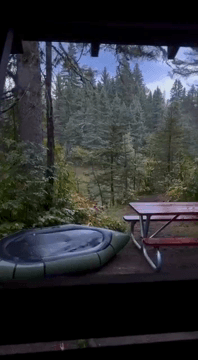
Hunting Seasons in MANITOBA (Canada): Official Opening/Closing Dates, Required Permits & Must-Know Regulations Manitoba is a prime destination for hunters, offering diverse game species and vast wilderness. To ensure sustainable hunting, the province enforces strict regulations on seasons, licenses, and quotas. This guide covers Manitoba’s hunting seasons, rules, and best practices to help you plan a responsible and successful trip. Regulatory Framework and Seasonal Dynamics in Manitoba Hunting seasons in Manitoba vary by species and region. Big game such as moose are typically hunted from September to November depending on the zone, while white-tailed deer season runs from October to December, with archery starting earlier. Black bears can be hunted during two main periods—spring (April–June) and fall (August–October). Upland birds like grouse and ptarmigan are available from September to December, and waterfowl including ducks and geese are generally hunted between September and November, with variations by zone. Wolf and coyote hunting remains open year-round in some areas. The Manitoba government adjusts hunting seasons based on wildlife population data, migration patterns, breeding cycles, climate conditions, and conservation needs. For example, early winters may shorten seasons, and moose hunting is restricted in overharvested zones to protect populations. Regional differences also influence timing and availability—northern Manitoba offers longer seasons for boreal species like woodland caribou under strict quotas, while southern Manitoba provides more opportunities for waterfowl and white-tailed deer. Compared to Saskatchewan, Manitoba maintains stricter moose hunting regulations due to declining populations. Recent reforms have shaped current hunting policies. Wolf hunting rules were tightened to protect caribou herds, electronic licensing was introduced in 2018, and mandatory hunter education certification became required in 2019. Seasonal Hunting Opportunities in Manitoba Seasons are broadly categorized into four periods. Spring focuses on waterfowl and turkey hunting and serves as an optimal time for predator control. Summer offers limited opportunities, mainly restricted to pest management. Fall is the peak hunting period, covering most game species and aligning with migration patterns. Winter hunting is specialized, primarily targeting wolves and other predators. Big game hunting peaks at specific times of the year—moose are most active during their rut in late September, white-tailed deer reach high activity in November during rutting season, and black bears are best targeted in spring after hibernation and in fall before denning. For upland birds and waterfowl, early mornings in September and October coincide with migration, while ruffed grouse are best pursued in October when leaves fall and visibility improves. Dawn and dusk are the most active periods for deer, moose, and waterfowl. Weather plays a key role too—cool, overcast days tend to increase animal movement, and full moon nights boost nocturnal activity. Migration weeks are especially critical for successful waterfowl hunts. Manitoba hosts several popular hunting events throughout the year. The Manitoba Hunting Expo in Winnipeg (March) brings together hunters for gear demos, expert seminars, and educational sessions on topics ranging from bison conservation to advanced waterfowl strategies. Waterfowl Heritage Days in September introduces youth to hunting through mentored hunts, safety clinics, and hands-on conservation activities across the province’s marshlands. Regulatory Restrictions and Conservation Measures in Manitoba To protect wildlife and promote ethical hunting, Manitoba enforces various restrictions. Certain zones prohibit doe permits or limit antlerless deer tags. Moose hunters must follow mandatory calf identification rules. Some species, such as woodland caribou (in most zones), whooping cranes, peregrine falcons, wolverines, and wood bison, are fully protected, while elk hunting requires limited draw licenses. Licensing Process and Regulatory Compliance in Manitoba Obtaining a hunting license in Manitoba involves several steps. Residents need a Manitoba Wildlife Identification Number (WIN card) and a hunter education certificate. Non-residents must hunt with a licensed outfitter or apply through a draw system. General hunting licenses cover small game, while draw hunts are required for moose, elk, and certain deer zones. Supportive organizations like the Manitoba Wildlife Federation provide training and conservation programs, and local outfitters offer guided experiences for non-residents. Legal Consequences and Enforcement Protocols Violating hunting laws carries serious consequences—hunting out of season may result in fines up to $50,000 CAD and even jail time. Shooting protected species incurs heavier penalties and license suspension. Failure to report harvested animals also leads to sanctions, as big game reporting is mandatory. Preparing for Your Hunt in Manitoba For a successful hunt, timing matters. Early morning hunts offer maximum visibility, mid-October is ideal for big game, and late September is best for waterfowl. Key hunting zones include Delta Marsh and Oak Hammock Marsh for duck hunting, and eastern Manitoba’s Interlake region for moose and deer. Gear choices should match the season. Lightweight clothing and insect repellent suit early-season hunts, while insulated gear and snow camouflage are essential later in the year. Tactics also vary—during rutting season, calls work well for moose and deer, while tracking in snow is effective during late-season hunts. Additional tips include scouting locations before the season starts, monitoring weather patterns closely, respecting landowner permissions, and practicing ethical hunting methods. By understanding Manitoba's hunting regulations and implementing strategic approaches, hunters can enjoy successful and responsib
Post: 14 August 14:52








